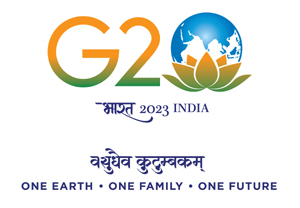
general information
- Location: Europe
- Capital: Zagreb
- Climate: Most of Croatia has a moderately warm and rainy continental climate as defined by the Köppen climate classification. Mean monthly temperature ranges between −3 °C (27 °F) (in January) and 18 °C (64 °F) (in July).
- Currency: Croatian kuna
- Country Code: +385
- Official language: Croatian language
Activities: Although it’s a small country, there are many things to do in Croatia because of its rich variety of beautiful landscapes and preserved natural areas: mountains, plains, forests, rivers, lakes, sea and islands. This is an ideal setting for outdoor activities like rafting, canoeing / kayaking, sea kayaking, walking / hiking, cycling / biking, sailing and fishing. If you are travelling through Croatia and wish to find out the best things to do in Zagreb, Pula, Zadar, Split and Dubrovnik regions and other destinations
How to reach Croatia
You can do so by air, bus, train, car and ferry (at least, these are the most sensible ways of getting there!) and your mode of transport may well depend on the country you live in and its proximity to Croatia.
Tourist Attraction
With its rocky, indented shore and more than a thousand islands, Croatia boasts one of the most beautiful stretches of coastline that Europe has to offer. In addition, many of Croatia’s coastal towns and cities have a fascinating history and are filled with the historical remains of Roman and Venetian times.
Events
Croatia offers an increasingly crammed festival calendar, with rock and DJ events, annual beach parties, niche art gatherings and folksy fairs taking place up and down the Adriatic throughout the summer. The bulk of the “serious” cultural festivals take place in Zagreb in spring and autumn, although Dubrovnik, Split and Rijeka offer a lot in the way of heavyweight drama and music, and almost every region of the country offers a film festival of one sort or another. In addition, the Croatian year is peppered with religious holidays, featuring church processions and celebratory feasting.
Cities in Croatia
Dubrovnik
With its imposing sea walls overlooked by the imposing Lovrijenac fortress, mass of terracotta-colored rooftops and dramatic cliff top location, the self-proclaimed ‘Pearl of the Adriatic’ is one of Croatia’s most visited destinations. For the best views, catch the cable car to the peak of nearby Mount Srd or take a scenic walk along the City Walls, then take in the highlights of Dubrovnik’s UNESCO-listed Old Town, known for its shimmering marble streets, grand baroque churches and magnificent 16th century Sponza Palace.
Zagreb
The capital and largest city of Croatia, Zagreb is a vibrant metropolis packed with both historic and modern attractions. Located in northwestern Croatia, the city dates back to the 2nd century AD when a diocese was first established by Hungarian King Ladislaus. Today, Zargreb is a sprawling cosmopolitan city and the heart of Croatian culture, academics and government.
Hvar
Take a ferry ride out to the UNESCO island of Hvar, one of 1,000 Croatian islands. It is considered the Mediterranean’s best preserved ancient Greek landscape with rural beauty in the islands olive groves, fruit orchards, vineyards and farms. Hvar town is a quaint town on the edge of a bay, the rest of the island has a number of small villages like Starigrad and Jelsa.
Split
The Roman remains in Split have put it on the map but it also has the longest coastline of any Croatian city with the Riva promenade running along the water front. The magnificent Roman UNESCO Diocletian’s Palace is a unique and well preserved architectural masterpiece used for shops, restaurants and luxury apartments. The pine forest in the Peninsula Park adds green to the city. Visit the underground caverns, the St. Domnius Cathedral and see the Grugr Ninski Statue – the historic harbor town of Trogir is a popular day trip from Split with Venetian buildings and palaces and a 13th century island fortress.
Korcula
Best known as the alleged birthplace of the famous merchant traveler, Marco Polo, Korcula is a 30-mile (50 km) island located off Croatia’s Adriatic Coast. Korcula is comprised of lush green forests, vineyards, olive groves, sandy beaches and charming villages. The island’s main town, Korucla Town, is a historic, walled town with Venetian Renaissance architecture, colorful markets and plenty of tourist facilities.










